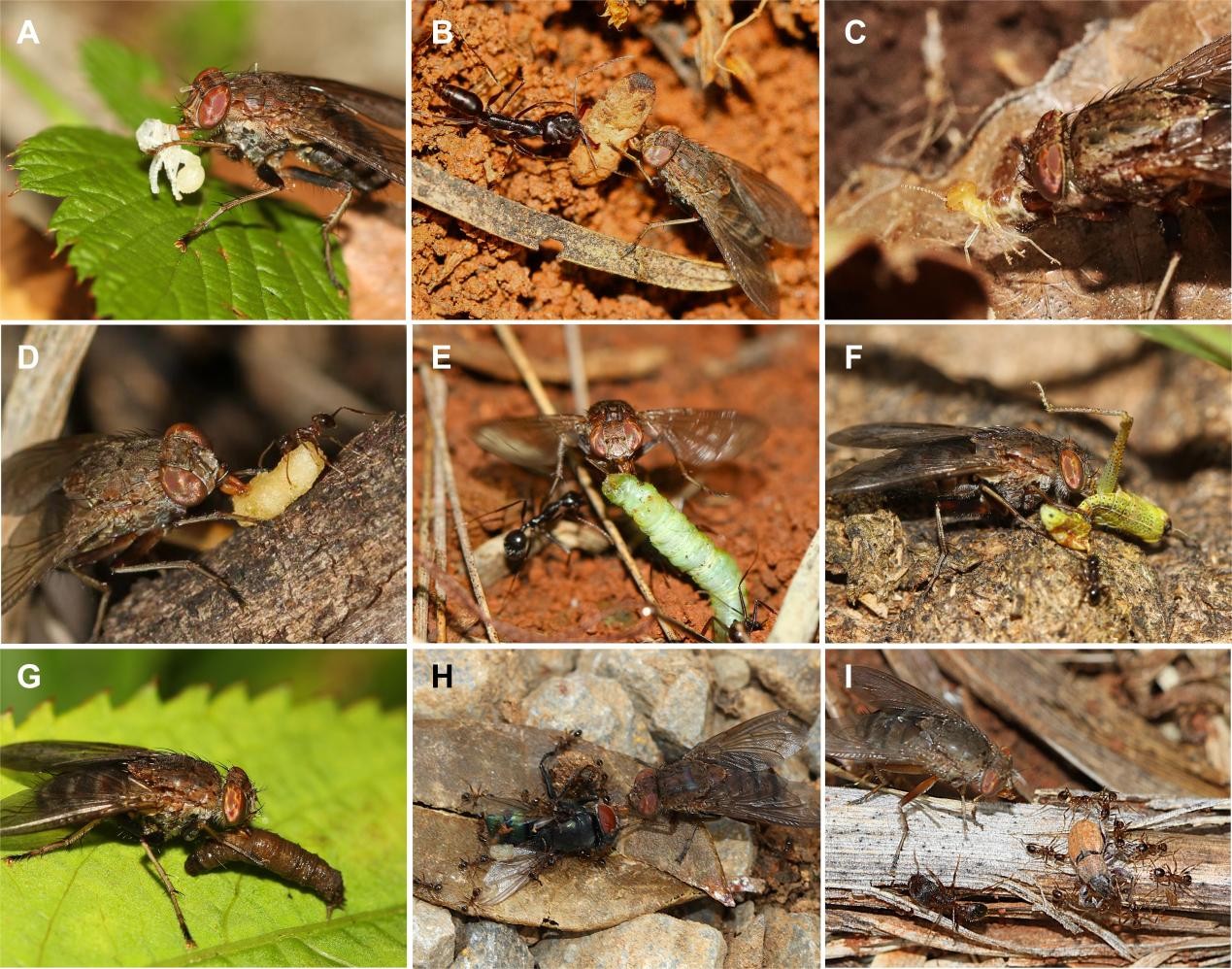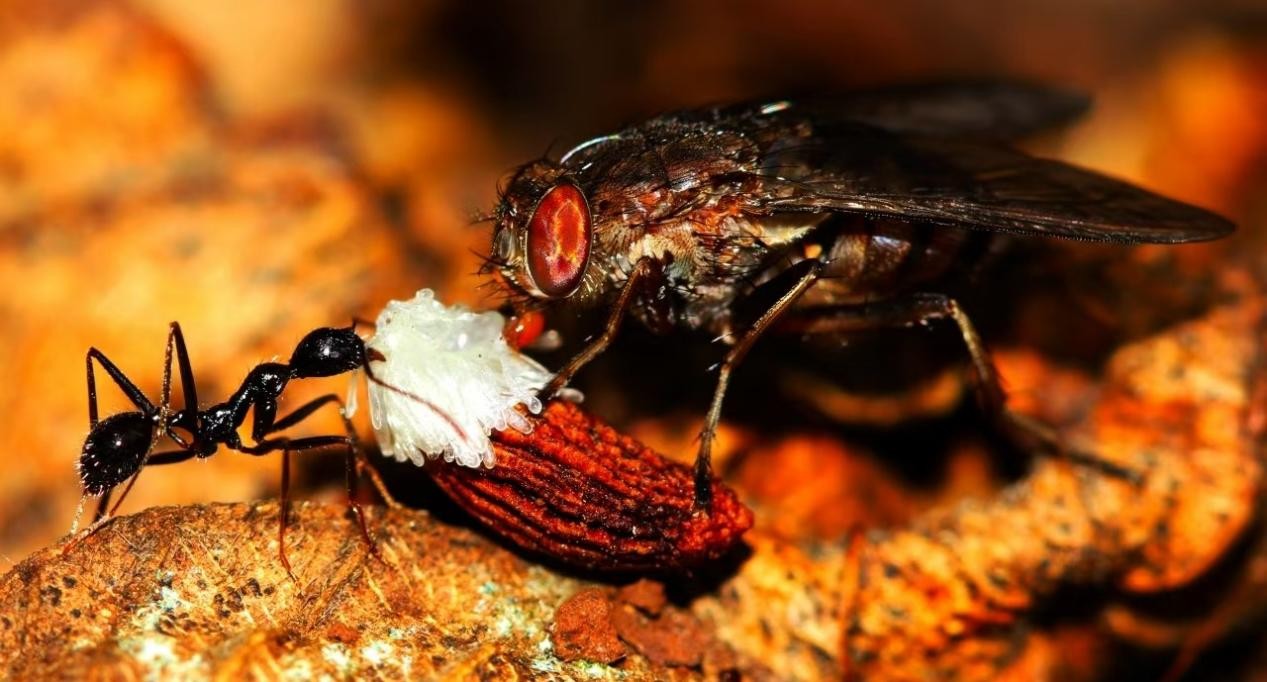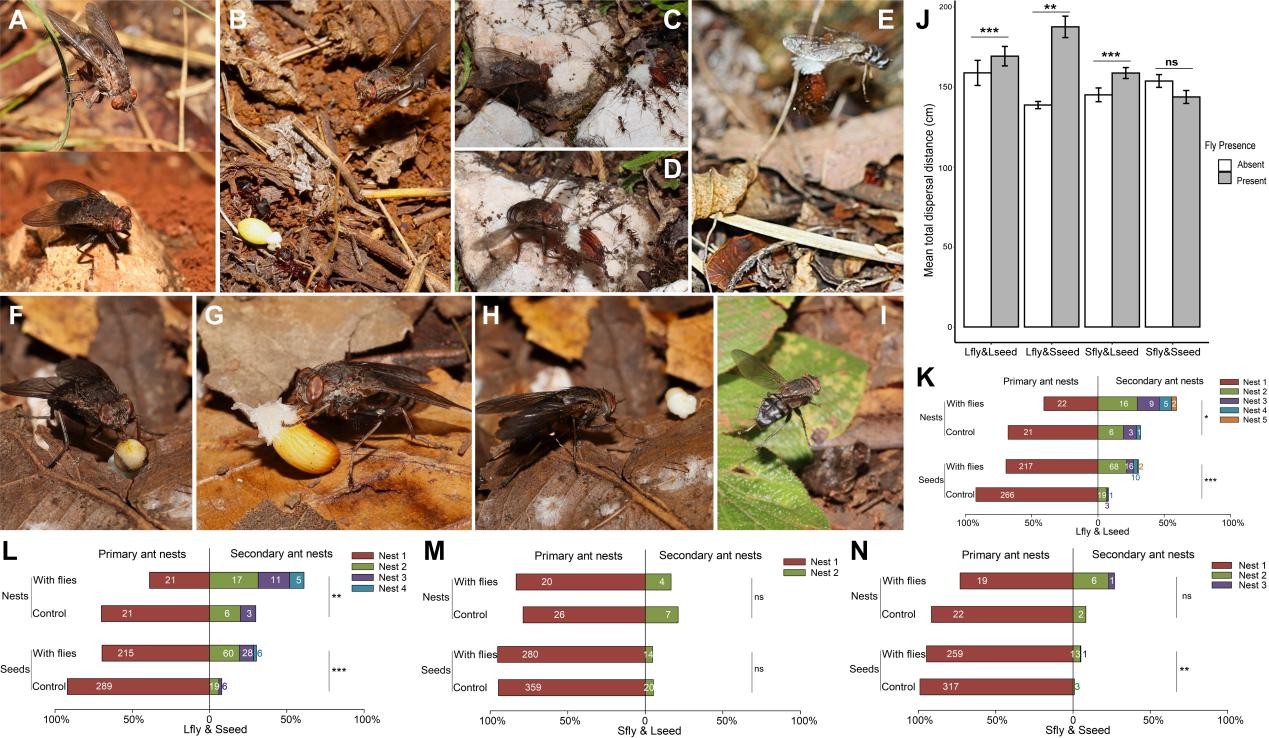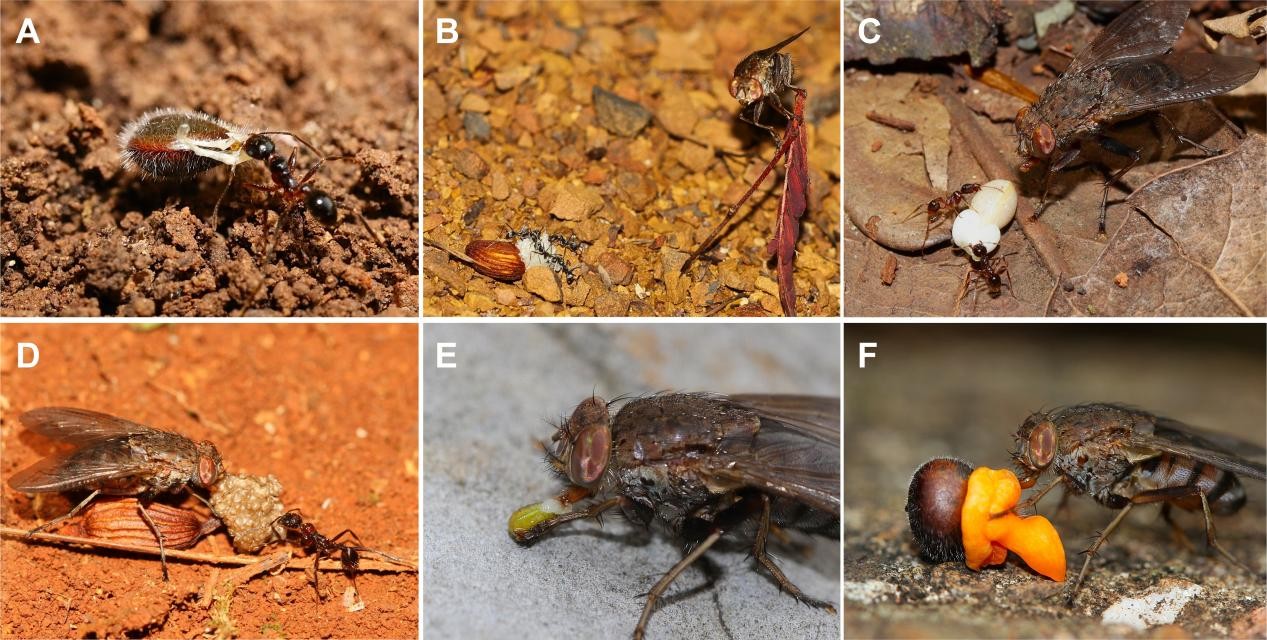
Seed dispersal is vital for plant reproduction and ecosystem health. While many plants rely on vertebrates like birds and mammals for dispersal through endozoochory, invertebrate contributions have been largely overlooked, apart from ant-mediated dispersal (myrmecochory). Although instances of seed dispersal by invertebrates such as wasps and beetles are often seen as rare curiosities, recent evidence suggests they could play a significant role.
Flies, especially those in the genus Bengalia, are an intriguing case. With over 150,000 species in the Diptera order, no known cases of seed dispersal by flies exist. Bengalia flies exhibit obligate kleptoparasitism, stealing food from ants and relying on this interaction for survival. Their distribution overlaps significantly with myrmecochorous plants, raising the possibility that they may disrupt seed dispersal by stealing seeds carried by ants.
A research team led by Prof. CHEN Gao from the Kunming Institute of Botany (KIB) of the Chinese Academy of Sciences investigated this hypothesis. Their findings were published in the journal Current Biology (Cell Press). Through field observations and bioassays, they gathered evidence that Bengalia flies can be effective seed dispersers. The team found that when ants transported seeds, the flies were attracted to steal them, effectively increasing the dispersal distance and reach compared to ants alone.
Through field observations and bioassays, they gathered evidence that Bengalia flies can be effective seed dispersers. The team found that when ants transported seeds, the flies were attracted to steal them, effectively increasing the dispersal distance and reach compared to ants alone.
The study revealed that Bengalia varicolor actively robs seeds from ants, dispersing them further. The process involves the flies observing ants, diving down to intercept them, and consuming the nutrient-rich appendages of the seeds (elaiosomes) before discarding them. These discarded seeds are often picked up and re-dispersed by other ants, demonstrating a complex ecological relationship that benefits both the plants and the flies.
The research team conducted systematic experiments to quantify the impact of Bengalia flies on myrmecochory, finding that these flies significantly extend seed dispersal distances and enhance access to suitable germination sites. This new form of diplochory involves a relay system: ants disperse seeds, Bengalia flies rob them, and then ants recollect the discarded seeds, potentially repeating this process multiple times.
This study highlights the unique role of Bengalia flies in seed dispersal, showing that they not only affect dispersal dynamics but also have a generalized interaction with various plant families, the researchers noted.
This finding adds a new dimension to the understanding of plant-insect interactions beyond traditional roles like pollination or herbivory.

Bengalia flies robbing food or offspring transported by ants: larvae and pupae of ants (A&B), termite (C), breadcrumbs (D), and insects from Lepidoptera, Orthoptera, Diptera, Coleoptera (E-I). (Image by KIB)

Bengalia fly robbing a seed of Stemona mairei being transported by ant. (Image by KIB)

Sequence of Bengalia flies robbing a seed from a transporting ant (A-I); and comparisons of seed dispersal distance (J), and the number of ant nests reached and seeds entering each nest (K-N), with and without Bengalia presence. (Imag by KIB)

Bengalia flies dispersing seeds of different plant groups: Polygalaceae (A & F), Stemonaceae (B & D), Celastraceae (C), and Papaveraceae (E). (Image by KIB)

86-10-68597521 (day)
86-10-68597289 (night)

52 Sanlihe Rd., Xicheng District,
Beijing, China (100864)

